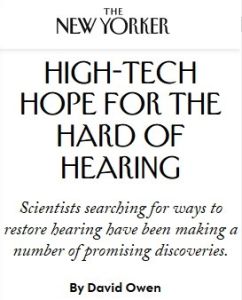Join getAbstract to access the summary!

Join getAbstract to access the summary!
David Owen
High-Tech Hope for the Hard of Hearing
Scientists searching for ways to restore hearing have been making a number of promising discoveries.
The New Yorker, 2017
What's inside?
Advances in medical research and hearing aids offer better quality of life for people with hearing loss.
Recommendation
New Yorker staff writer David Owen provides a simple explanation of how and why hearing loss occurs. He reveals some scary realities – for example, hearing loss can happen more easily than you think – but he follows up with reassuring science and technology. Owen explores lab experiments that reverse deafness in mice and hearing aids that you can control with your smartphone. The news is largely positive, and options exist even for the more budget-conscious. getAbstract recommends Owen’s report to anyone affected by hearing loss.
Summary
About the Author
David Owen is a staff writer at The New Yorker.


















Comment on this summary